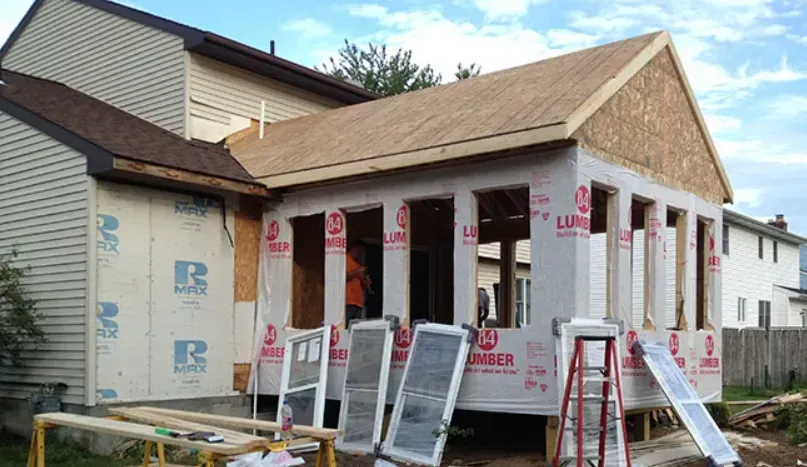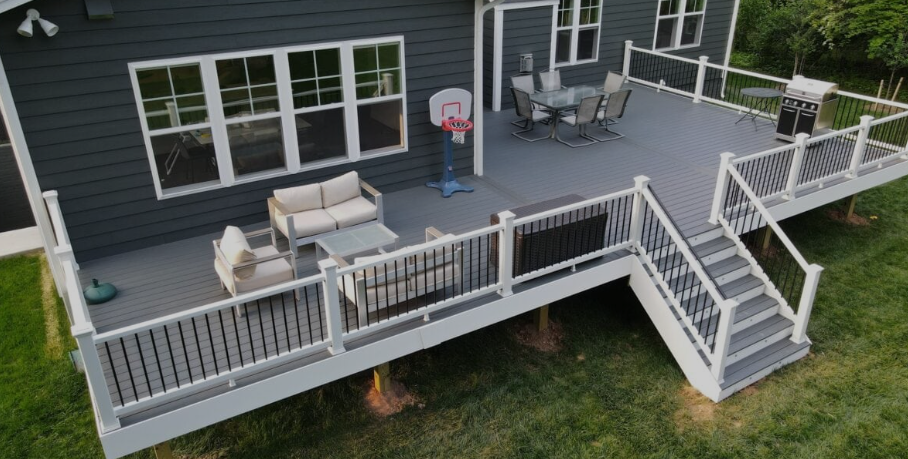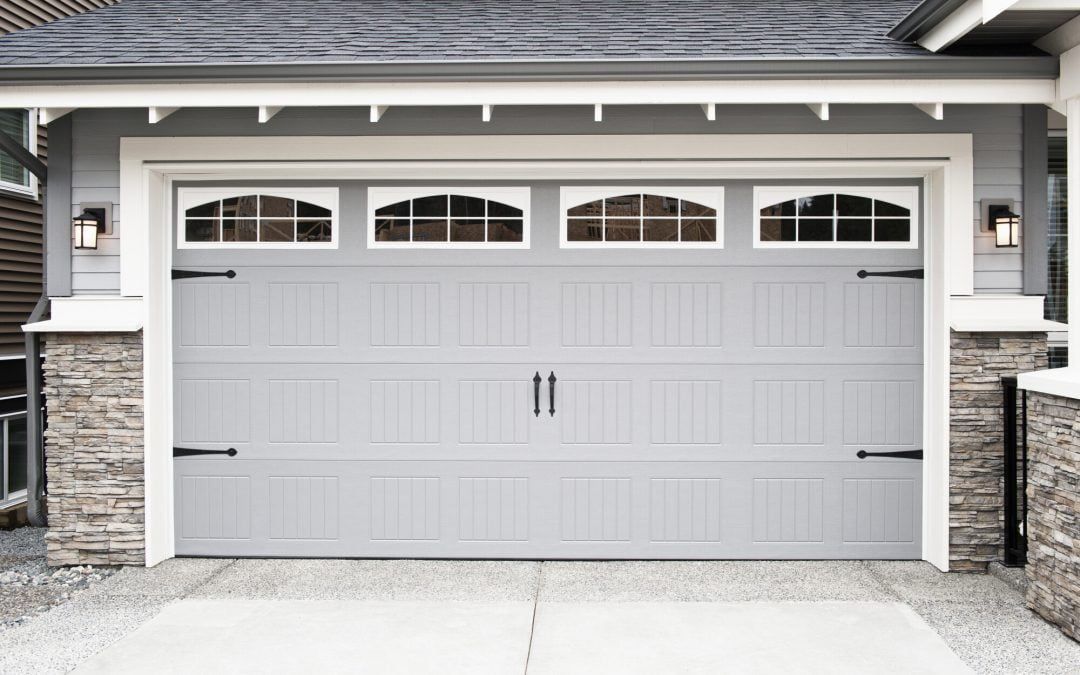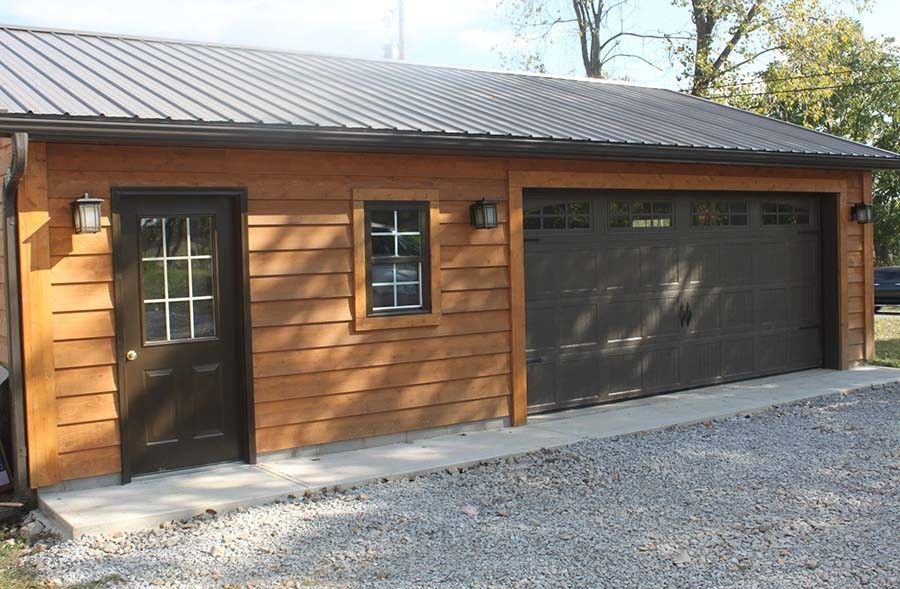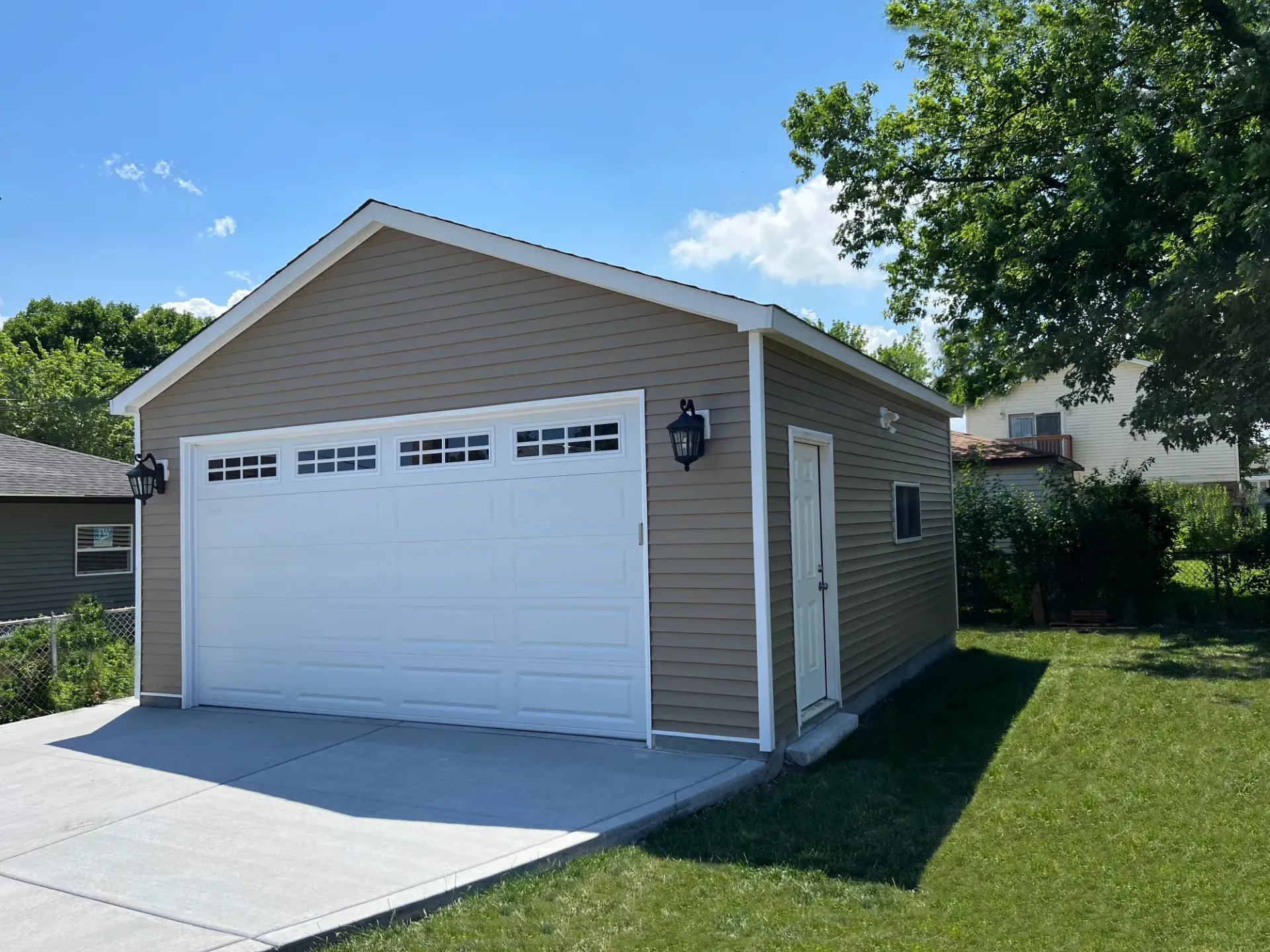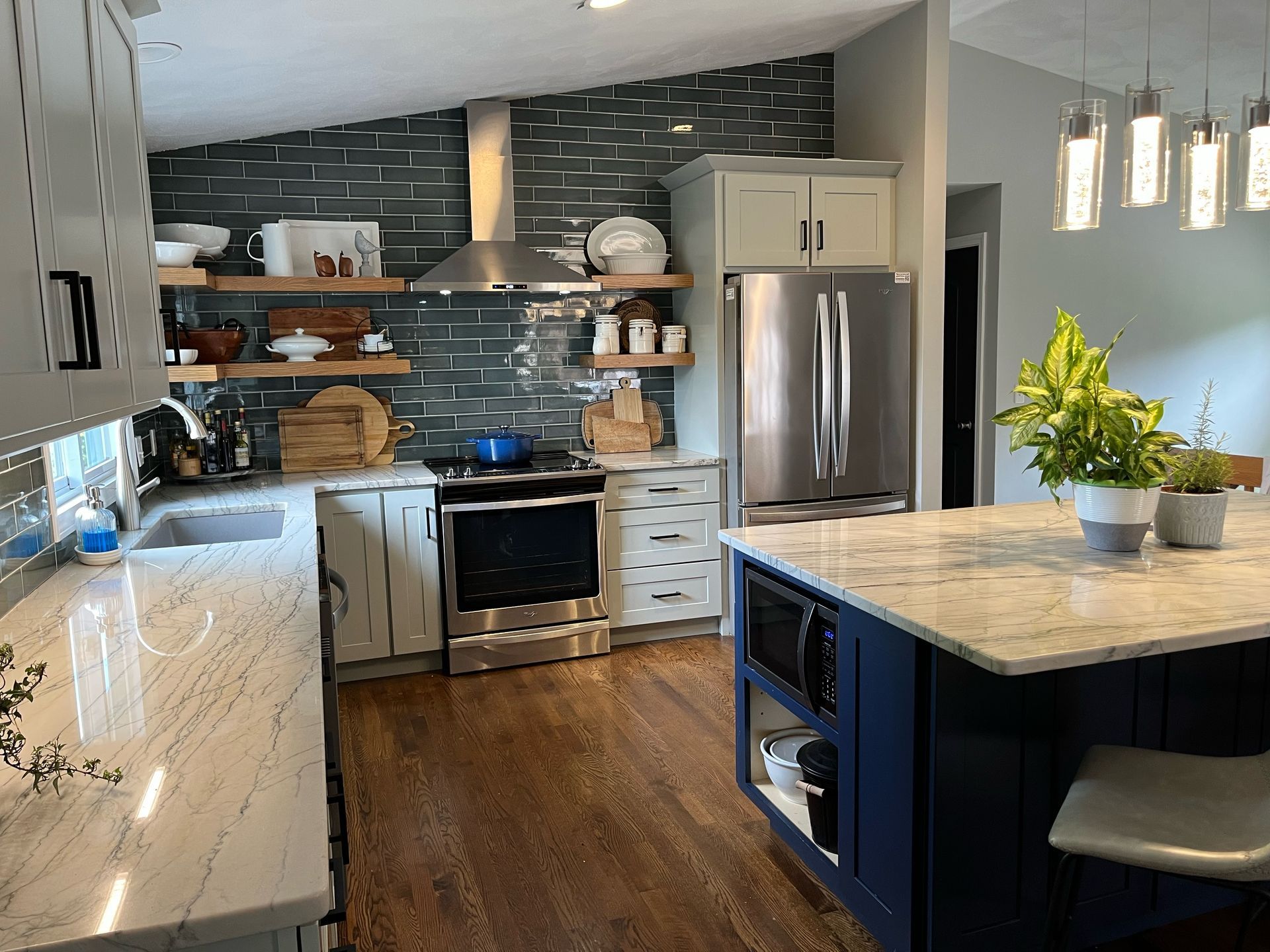Rhode Island Historic Home Renovation Dumpsters
Rhode Island's rich architectural heritage includes thousands of historic homes - Colonial mansions, Victorian estates, Federal-style townhouses, and mill-era workers' housing. Renovating these treasures requires special consideration for preservation standards, period materials, and proper disposal of historic debris. This guide covers everything Rhode Island homeowners and contractors need to know about dumpster rentals for historic home renovations.
What Size Dumpster for Historic Home Renovations?
15-Yard Dumpster (12' L × 7.6' W × 4.6' H) - $475.00
- Best for: Single room historic renovations, careful preservation projects
- Capacity: 4-5 pickup truck loads
- Weight limit: 2 tons included
- Rental period: Up to 7 days
- Extensions: $8/day
- Typical projects: Preserving kitchen, single bathroom, measured demolition
20-Yard Dumpster (14' L × 8' W × 6.5' H) - $540.00
- Best for: Multiple room renovations, significant historic material removal
- Capacity: 6-8 pickup truck loads
- Weight limit: 2 tons included
- Rental period: Up to 7 days
- Extensions: $8/day
- Extra height (6.5'): Better for dimensional lumber, period materials
- Typical projects: Whole-floor renovations, extensive plaster removal, multi-room updates
Historic Renovation Considerations:
- Plaster walls MUCH heavier than modern drywall (8-10 lbs per sq ft)
- Old lath and horsehair plaster common
- Lead paint abatement debris (certified disposal)
- Salvageable materials set aside (reduces dumpster volume)
- Careful, methodical work = longer timeline = possible extensions
- Plan for weight overages with plaster removal
Unique Challenges of Historic Home Renovations
Period Materials and Weight:
Plaster Walls (Most Common Challenge):
- Old homes: Plaster over wooden lath
- Weight: 8-10 lbs per square foot
- Modern drywall: 1.6-2 lbs per square foot
- Plaster is 4-5× heavier than drywall!
- Removing one wall: Easily 1,000-2,000 lbs
- Expect weight overages with extensive plaster removal
Old Timber and Lumber:
- Hand-hewn beams (very heavy)
- Old-growth wood (denser than modern)
- Multiple coats of lead paint
- Architectural salvage value (set aside before disposal)
- Heavier and more valuable than modern lumber
Original Flooring:
- Wide-plank pine (Colonial homes)
- Oak flooring (Victorian era)
- Multiple refinishing layers
- Often salvageable for reuse
- Check for value before disposing
Period Hardware and Fixtures:
- Cast iron radiators (extremely heavy!)
- Claw-foot tubs (300-500 lbs)
- Original doors and hardware (salvage value)
- Historic light fixtures
- Separate valuable items for donation/sale
Lead Paint and Asbestos:
- Pre-1978 homes contain lead paint (federal law)
- Pre-1980 homes may contain asbestos
- Certified abatement required for both
- Special disposal requirements
- Cannot mix with regular construction debris
Newport Historic District Renovations
Mansion District (Bellevue Avenue):
- Gilded Age "cottages" and estates
- Extreme preservation standards
- Historic district commission oversight
- High-end materials and details
- Professional contractors essential
Colonial Newport (Downtown):
- 17th and 18th century structures
- National Historic Landmark District
- Strictest preservation requirements
- Period-appropriate materials mandated
- Careful renovation approach required
Point Section and Historic Neighborhoods:
- Working-class historic homes
- Colonial and Federal architecture
- More flexible renovation standards
- Owner-occupied renovations common
Dumpster Placement Challenges:
- Narrow colonial streets
- Limited parking
- Tourist season impacts (avoid June-September)
- Historic district visibility concerns
- Permits often required: (401) 845-5800
Recommended:
- 15-yard for controlled, preservation-focused projects
- 20-yard for more extensive renovations
- Book 3-4 weeks ahead (high demand, limited access)
- Early morning delivery (avoid tourist traffic)
Providence Historic Home Districts
America's Most Concentrated Historic District:
- 18th and 19th century architecture
- Federal, Georgian, Victorian styles
- Steep hills and narrow streets
- Brown University and RISD area
- Active preservation community
Renovation Challenges:
- Very narrow streets (dumpster placement difficult)
- Limited parking
- Strict historic district rules
- Triple-decker renovations common
- Plaster walls throughout
Dumpster Considerations:
- 15-yard better for tight access
- Street permits almost always required
- Providence DPW: (401) 680-5450
- Coordinate with neighbors (limited space)
- Book 2-3 weeks ahead
Federal Hill:
- Italian-American historic neighborhood
- Triple-decker renovations
- Urban density challenges
- Active neighborhood association
- Preservation-minded community
West Side and Armory District:
- Victorian homes and historic buildings
- Emerging renovation activity
- More flexible than East Side
- Good dumpster access typically
- Growing historic preservation interest
Cranston and Warwick Historic Homes
Cranston's Edgewood Historic District:
- Late 19th/early 20th century architecture
- Grand Colonials and Victorians
- Established neighborhood
- Quality construction and materials
- Ample driveway space for dumpsters
Pawtuxet Village (Warwick/Cranston):
- Colonial-era village center
- Waterfront historic homes
- Charming preservation projects
- Tourist destination
- Careful renovation standards
Typical Renovations:
- Updating systems (plumbing, electrical, HVAC)
- Kitchen and bathroom modernization
- Restoring original details
- Energy efficiency improvements
- Period-appropriate additions
Dumpster Advantages:
- Better access than urban areas
- Driveways accommodate 20-yard easily
- Less restrictive than Providence
- Good contractor availability
- Both 15-yard and 20-yard work well
Pawtucket and Blackstone Valley Mill Towns
Worker Housing Renovations:
- Triple-deckers and multi-families
- Mill-era construction (1850s-1920s)
- Practical, sturdy buildings
- Original plaster walls
- Period architectural details
Common Projects:
- Multi-family property updates
- Converting to condos
- System upgrades
- Preserving historic character
- Energy efficiency retrofits
Renovation Challenges:
- Dense urban environment
- Multi-family coordination
- Plaster walls (very heavy)
- Lead paint common
- Access and parking
Dumpster Needs:
- 20-yard recommended for triple-decker projects
- Street permits often needed
- Coordinate with multiple units
- Longer timelines (extensions common)
- Budget for plaster weight overages
Salvaging Before Disposal
What to Save (Not Dispose):
High-Value Architectural Elements:
- Original doors (period hardware, solid wood)
- Hand-carved mantels and fireplace surrounds
- Stained glass windows
- Original light fixtures (gas converted to electric)
- Decorative plaster moldings and medallions
- Original hardwood flooring (wide-plank pine especially)
- Period hardware (hinges, locks, handles)
- Built-in cabinetry and woodwork
Moderate Value Items:
- Old radiators (decorative cast iron)
- Claw-foot tubs (refinishable)
- Vintage bathroom fixtures
- Old bricks (colonial bricks valuable)
- Antique doors and windows
- Wainscoting and trim
Rhode Island Architectural Salvage Resources:
Habitat for Humanity ReStore (Warwick):
- 77 Briggs St, Warwick, RI 02889
- Accepts building materials, fixtures, doors
- Free donation pickup available
- Tax deduction
- Supports affordable housing
Architectural Salvage Dealers:
- Boston area salvage yards (close to RI)
- Specialty dealers for period items
- Online marketplaces (eBay, Chairish)
- Local antique dealers
Financial Benefits:
- Reduce dumpster volume needed (save money)
- Tax deduction for donations
- Sell valuable items (offset project costs)
- Preserve historic materials (good karma!)
Lead Paint Abatement and Disposal
Federal and Rhode Island Requirements:
Lead Paint Reality:
- All pre-1978 homes presumed to have lead paint
- Rhode Island has high percentage of old housing
- Renovation creates lead dust and debris
- Strict EPA regulations (RRP Rule)
- Rhode Island Department of Health oversight
Certified Abatement Required:
- EPA-certified renovators
- Proper containment during work
- HEPA filtration and cleanup
- Disposal at approved facilities
- Documentation required
Lead Debris Disposal:
- Cannot mix with regular construction debris
- Certified disposal facilities required
- Testing may be needed
- Higher disposal costs
- Not accepted in standard dumpster rentals
Managing Lead in Historic Renovations:
- Hire EPA-certified contractors
- Test before disturbing paint
- Proper containment critical
- Separate disposal arranged
- Protect workers and occupants
Rhode Island Resources:
- RI Department of Health Lead Poisoning Prevention Program
- EPA Lead-Safe Certification
- Certified contractors list available
- Take lead seriously - health and legal implications
Plaster Wall Removal Weight Management
The Heaviest Historic Renovation Material:
Plaster and Lath Construction:
- Three-coat plaster system (scratch, brown, finish)
- Wooden lath backing (thin strips)
- Often horsehair binder (old homes)
- Rock lath in later homes
- Combined weight: 8-10 lbs per square foot
Weight Calculations:
Small Room (10' × 12' × 8' walls):
- Wall area: 352 sq ft
- Plaster weight: 2,816-3,520 lbs (1.4-1.76 tons)
- One small room approaches 2-ton limit!
Whole First Floor (1,200 sq ft floor, 8' ceilings):
- Approximate wall area: 2,400 sq ft
- Plaster weight: 19,200-24,000 lbs (9.6-12 tons!)
- Requires multiple dumpsters or expect heavy overages
Budget Planning:
- Extensive plaster removal: Plan for weight overages
- $140/ton overage fee (reasonable for this situation)
- Example: 4 tons total = 2 tons over = $280 extra
- Still most cost-effective disposal method
Alternatives to Reduce Cost:
- Leave plaster where possible (less common today)
- Plaster over existing (if suitable)
- Phased project (spread over multiple rentals)
- Removal usually necessary for modernization
Permits and Historic District Approvals
Multiple Approval Layers:
Historic District Commission Approval:
- Required before work begins
- Exterior changes especially scrutinized
- Period-appropriate materials required
- Design review process
- Public hearings sometimes needed
Building Permits:
- Standard renovation permits required
- Plumbing, electrical, structural
- Local building department
- Inspections throughout project
Dumpster Permits (If Street Placement):
- Separate from renovation permits
- Required if dumpster on public street
- Processing time: 2-5 business days
- Costs: $25-$50 typically
Rhode Island Historic District Contacts:
Newport:
- Historic District Commission: (401) 845-5386
- Very active and strict oversight
- Early consultation recommended
Providence:
- Historic District Commission: (401) 680-5387
- Multiple historic districts
- Design guidelines specific to area
Pawtucket:
- Historic District Commission
- Blackstone Valley heritage
- Growing preservation focus
General Rule:
- Start approval process early (months ahead)
- Consult with commission before purchasing
- Period-appropriate materials worth extra cost
- Patience required for historic properties
Timeline Considerations for Historic Renovations
Why Historic Projects Take Longer:
Discovery and Surprises:
- Hidden damage revealed during demolition
- Structural issues (knob-and-tube wiring, outdated plumbing)
- Unexpected material conditions
- Previous renovation quality issues
- Buffer time essential
Careful, Methodical Work:
- Preservation requires patience
- Salvaging materials takes time
- Period details need attention
- Can't rush craftsmanship
- Quality over speed
Material Sourcing Delays:
- Period-appropriate materials harder to find
- Custom millwork lead times
- Specialty contractors scheduling
- Historic district approval timeline
- Longer procurement periods
Dumpster Rental Implications:
- Extended rental periods common
- $8/day extensions very affordable
- Plan for 10-21 day rentals typical
- Budget accordingly
- Flexibility essential
Typical Timeline:
- Kitchen renovation: 6-12 weeks (vs. 3-6 modern)
- Bathroom renovation: 4-8 weeks (vs. 2-4 modern)
- Whole house: 6-12+ months (vs. 3-6 modern)
- Historic projects take 2× as long
Cost Considerations for Historic Home Dumpsters
Budgeting for Historic Renovations:
Dumpster Rental Costs:
- 15-yard base: $475
- 20-yard base: $540
- Weight overages (common with plaster): $140/ton
- Extensions (likely needed): $8/day
- Budget $600-$800 per dumpster for historic work
Typical Project Dumpster Needs:
Single Room Preservation:
- One 15-yard dumpster
- Possible weight overage (plaster)
- Estimated cost: $475-$650
Multi-Room Renovation:
- One 20-yard dumpster
- Likely weight overage
- Extended rental (14-21 days)
- Estimated cost: $650-$900
Whole House Historic Renovation:
- Multiple dumpsters (2-4)
- Sequential rentals
- Heavy plaster throughout
- Extended timelines
- Estimated cost: $1,500-$3,500 for dumpsters
Comparing to Overall Project:
- Historic kitchen: $40,000-$100,000+
- Historic bathroom: $25,000-$60,000+
- Whole house: $200,000-$500,000+
- Dumpster = 1-2% of total budget (minimal)
Working with Historic Preservation Contractors
Specialized Expertise Required:
What to Look For:
- Experience with historic properties
- Understanding of period construction
- Relationships with historic commissions
- Knowledge of appropriate materials
- Craftsmanship and attention to detail
Dumpster Coordination:
- Contractor may include in bid (compare prices)
- Often cheaper to rent yourself (save 20-30%)
- Coordinate timing carefully
- Extended timeline accommodation
- Communication essential
Rhode Island Historic Contractors:
- Preservation carpenters
- Historic masons and plasterers
- Period-appropriate tradespeople
- Often multi-generational Rhode Island families
- Worth the premium for quality work
Rhode Island Historic Home Renovation FAQs
Q: What size dumpster for plaster wall removal? A: 15-yard for single room, 20-yard for multiple rooms. Plaster is extremely heavy (8-10 lbs per sq ft). Expect weight overages at $140/ton - budget accordingly.
Q: Can I dispose of lead paint debris in a dumpster? A: No. Lead paint debris requires certified disposal at approved facilities. Hire EPA-certified contractors who handle proper disposal separately.
Q: Should I save original materials before disposal? A: Yes! Original doors, hardware, mantels, flooring, fixtures often have significant value. Donate to Habitat ReStore or sell. Reduces dumpster volume and preserves history.
Q: How much does plaster weigh compared to drywall? A: Plaster with lath weighs 8-10 lbs per sq ft. Modern drywall weighs 1.6-2 lbs per sq ft. Plaster is 4-5× heavier! Plan for weight overages.
Q: Do I need special permits for historic home renovations? A: Usually yes - historic district approval, building permits, and dumpster permits (if street placement). Start approval process months ahead.
Q: Can I do DIY renovation on a historic home? A: Some work yes, but specialized tasks (plaster repair, period carpentry) best left to experts. Historic district commissions may require qualified contractors.
Q: How long will my historic renovation take? A: Typically 2× longer than modern homes. Kitchen: 6-12 weeks. Bathroom: 4-8 weeks. Whole house: 6-12+ months. Plan for dumpster extensions at $8/day.
Q: Is renovating a historic home worth it? A: Absolutely! Historic homes have character, quality, and craftsmanship impossible to replicate. Proper renovation preserves heritage and creates lasting value.
Q: What's the biggest cost surprise in historic renovations? A: Hidden damage, outdated systems, and period-appropriate materials cost more. Budget 20-30% contingency. Dumpster weight overages common but manageable.
Q: Where can I find period-appropriate materials in Rhode Island? A: Habitat ReStore (Warwick), architectural salvage yards (Boston area), specialty suppliers, and custom millwork shops. Historic contractors have sources.
Rockhouse Disposal supports Rhode Island historic preservation:
- Understanding of period material challenges
- Flexible scheduling for longer timelines
- Patient approach to careful renovation work
- Reasonable weight overage pricing (plaster is heavy!)
- Extended rental periods at $8/day
- We've served many historic renovation projects
Contact us today!
Renovating Rhode Island's historic homes preserves our architectural heritage for future generations. We're proud to support these important projects with reliable dumpster rental services tailored to the unique needs of historic preservation.
